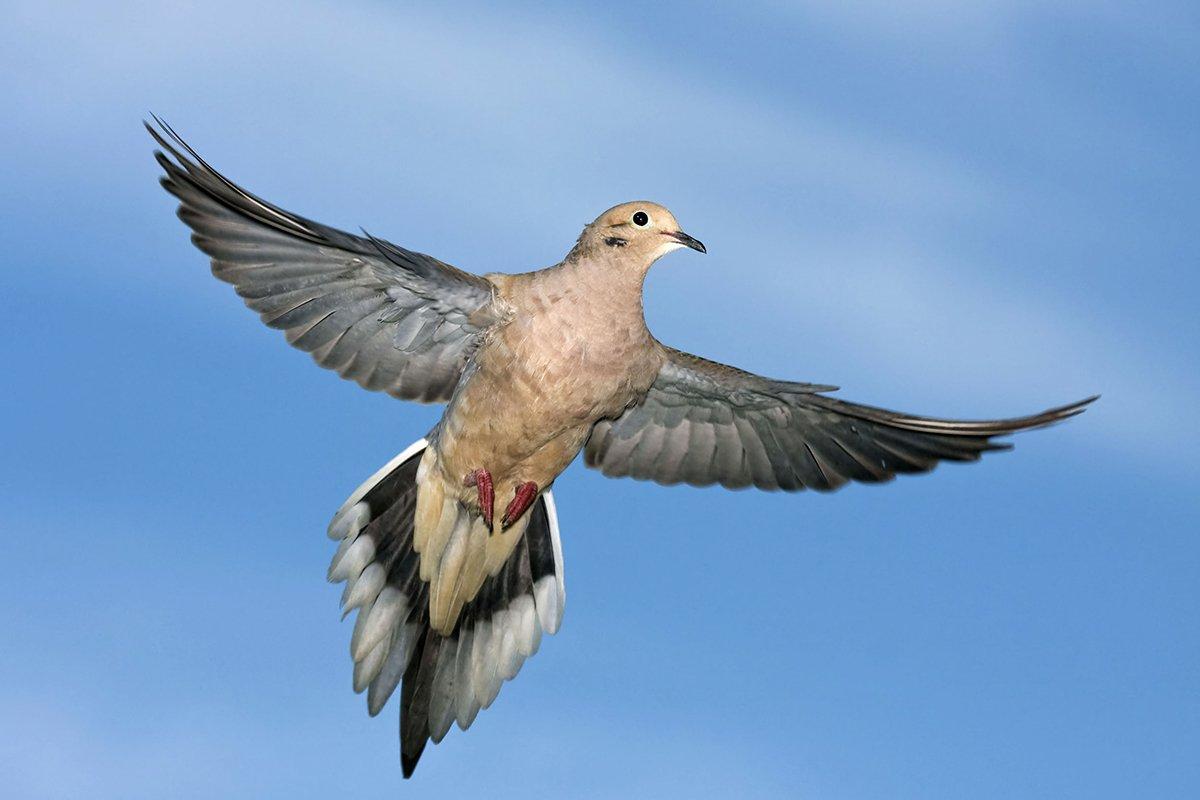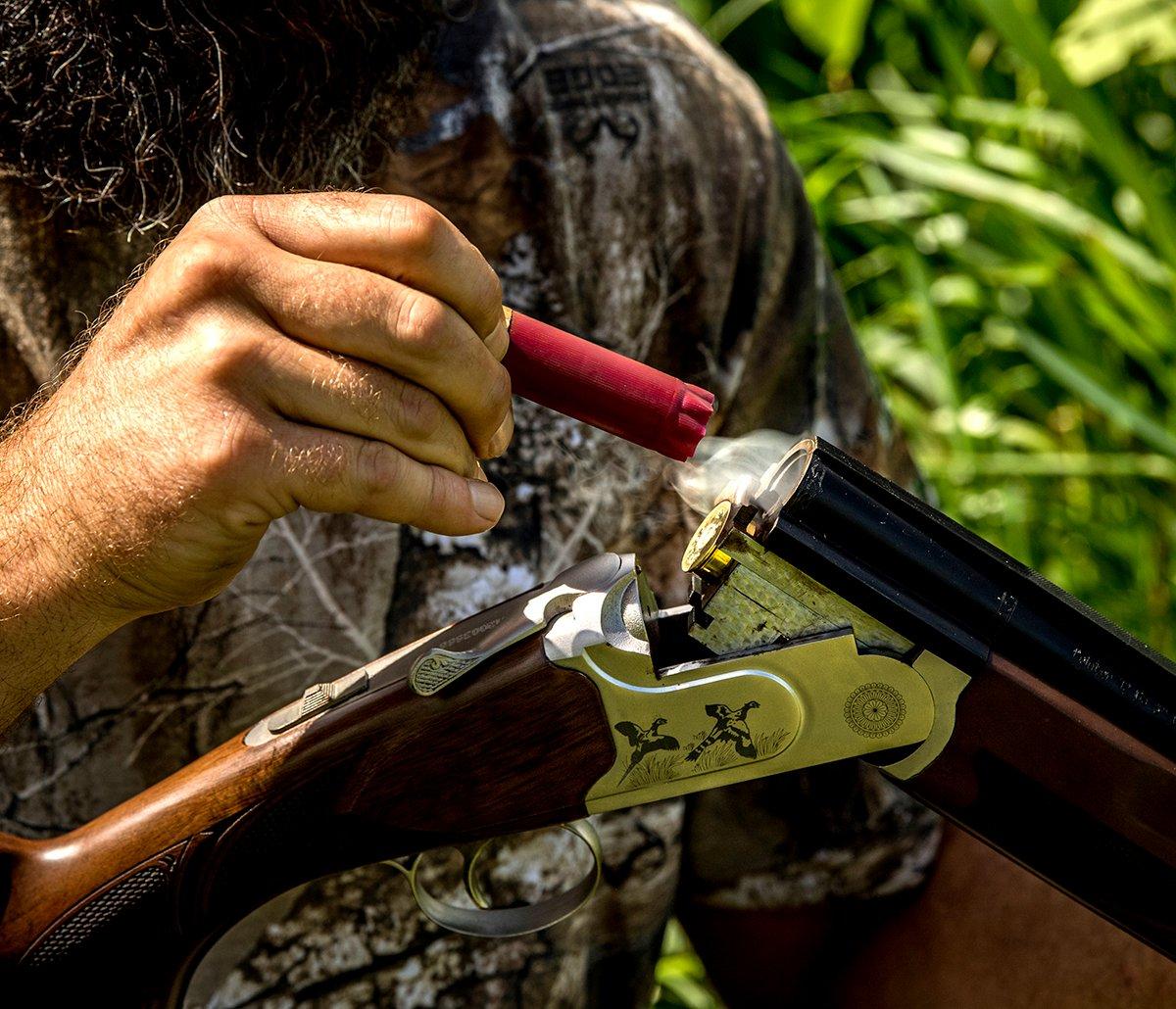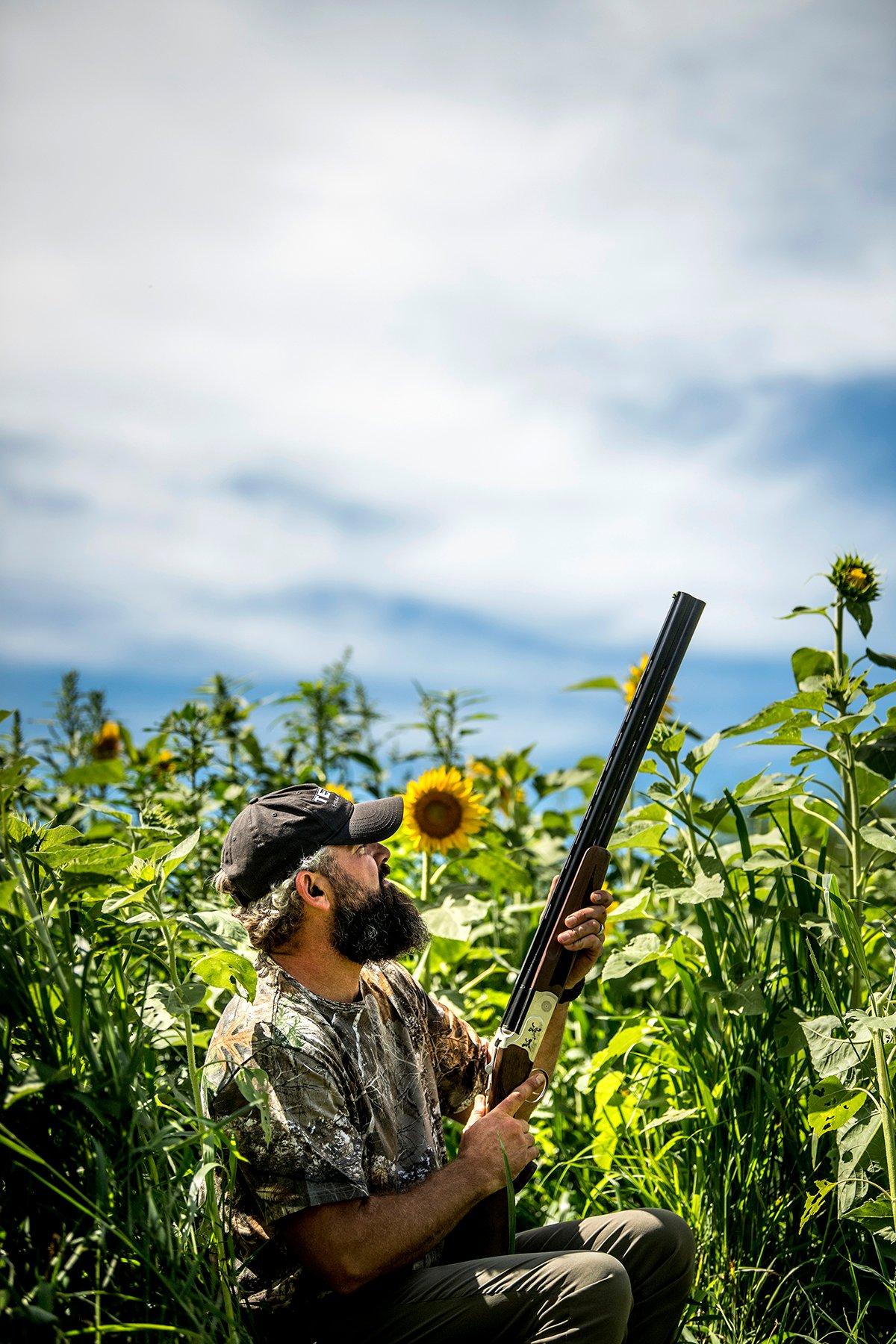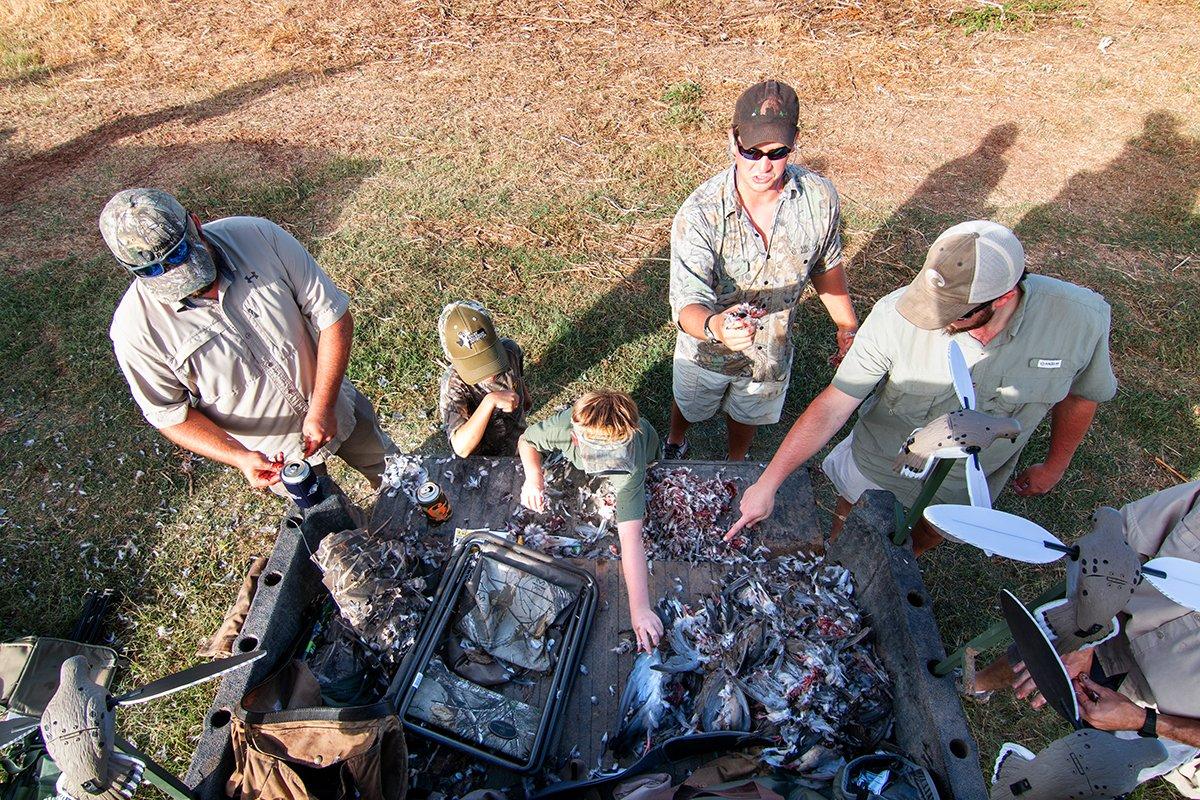Dove season sneaks up on you. One day, you’re mowing the lawn, fishing or, heaven forbid, playing golf. The next, you’re up to your ankles in smoking empties. According to an often-quoted statistic, you’ll shoot five to seven shells per dove bagged. At that rate, the hull pile gets deep in a hurry.
It doesn’t have to be that way. There’s not much you can do now about the clay targets you didn’t shoot this past summer. That will be next year’s project. But I can help in the short term. Here are 25 tips to make your dove season better.
Table of Contents
- 1. Pick the Right Gun
- 2. Stock Up On Shells
- 3. Improve Your Chances
- 4. Clean your Gun
- 5. Shoot
- 6. Bring an Extra Gun
- 7. Scout Late
- 8. Watch the Wires
- 9. Find Water
- 10. Check the Crop
- 11. Watch the Harvest
- 12. Look for Flight Lines
- 13. Look for Trees
- 14. Take Good Shots
- 15. Look at the Eye
- 16. Own the Overheads
- 17. Crush the Crossers
- 18. Mark the Falls
- 19. Skip the Doubles
- 20. Stop at Two
- 21. Hide in Plain Sight
- 22. Don’t Go Low
- 23. Protect Your Ears
- 24. Protect Your Eyes
- 25. Don’t Hang Your Gun Up After Opening Day
1. Pick the Right Gun
Dove hunting is supposed to be fun, and if you enjoy shooting family heirlooms or featherlight .410s at doves, who am I to tell you not to? But if your idea of fun is hitting more doves, choose a 12- or 20-gauge with some heft and at least a 28-inch barrel. A longer, heavier gun swings smoothly, points surely and soaks up recoil. The best dove shooting I did this past year was with a 12-gauge sporting clays gun.
2. Stock Up On Shells
Ammunition is available again, and there’s no reason to run out opening day, which I have actually done. Begging shells from people in the field is just embarrassing. Field or target loads of Nos. 7½ or 8 lead or 6 or 7 steel work. Steel loads kill fine, by the way. Lighter loads, with less shot and lower velocities, kick a lot less than heavy, high-speed stuff, and you will shoot a lot in no more padding than a T-shirt. Be sure your ammo will cycle your semi-auto, but other than that, lighter is better.
3. Improve Your Chances
A more open choke, such as improved cylinder, increases your chances of hitting doves. While conducting a test of lead and steel dove loads in Texas, during which more than 1,100 doves were bagged, ballistics expert Tom Roster recorded data on chokes. Shooters using improved cylinder hit 26% of their shots. Those with modified chokes recorded a 21% hit rate. Full-choke shooters succeeded on only 16% of their attempts.
4. Clean your Gun
The only thing worse than emptying your gun at a dove without touching a feather is not being able to empty your gun. If you put your shotgun away at the end of the previous season and forgot about it, it’s time to get reacquainted. Clean it, making sure to strip off the old oil. Then lightly oil it, and wipe away most of that oil.
5. Shoot
Even shooting a box of shells before opening day is much better than not shooting at all. Concentrate on two things: keeping your eyes on the target throughout the shot, and matching your gun speed to the target’s speed. With most hunters, that means slowing way down.
(Don’t Miss: How to Build an Awesome Dove Hunting Field)
6. Bring an Extra Gun
The best emergency repair kit is an extra gun. Pack an extra of the same gauge into the field. Breaking out the spare gun is much more convenient than going back to the truck for it or trying to fix your gun, and it’s more dignified than asking other hunters if they have a gun you can borrow.
7. Scout Late
Unlike shooting practice, which should start after turkey season, dove scouting is actually best put off as long as possible. Doves react quickly as sunflowers are cut or harvest begins, and their patterns can change in a day. Birds won’t necessarily be where you saw them a week ago.
8. Watch the Wires
When you scout in the morning and late in the day, look for doves on power lines, where they gather before feeding. Here’s my rule of thumb when I’m scouting cut cornfields: If I see 10 doves sitting together, the field might be worth hunting. If there are 20, it’s definitely worth hunting. A lot more than 20 means I’m calling my friends.
9. Find Water
In addition to food, look for water, especially ponds with some bare dirt around the edges where doves might come to drink. If you find a waterhole, you can have some very good close chances during the last hour of shooting light as doves get a drink before roosting.
10. Check the Crop
Not all dove fields attract birds equally. Sunflowers might look good to us, but for some reason, doves prefer one field to another. If you show up at a dove field without scouting, you might not get much shooting.
(Don’t Miss: No Dove Field? No Problem)
11. Watch the Harvest
A harvested or cut field can attract just as many doves as a managed sunflower field. Where I live, I’ve had my best hunts in cornfields that have been chopped for silage. In other places, it might be a harvested canola or sunflower field. Look for recently opened fields and doves sitting on wires on dead trees around them.
12. Look for Flight Lines
Every dove field has its hot corners where the shooting is better. Before the season starts, watch a field to see where birds are flying in and out. This past year, I found the best dove field at a nearby public area and watched it long enough to see that most doves were cutting across one of the far corners. I was there the next day and had a good shoot.
13. Look for Trees
The right bare tree on the field edge or sometimes in the field might attract doves that want to perch in the branches before flying down to feed. If you find such a tree, you’ll get easy shots at birds coming in for a landing.
14. Take Good Shots
During opening day in a good field, you’ll get lots of chances, and at first, you’ll want to take every one. Calm down. You’ll get shooting. Keep your shots within 30 yards. You’ll hit a higher percentage, use fewer shells and cripple fewer birds, and you won’t have to spend time looking for birds you knocked down and can’t find.
15. Look at the Eye
Where your eyes go, your hands take the gun. Looking at the whole bird increases the chance of a miss or hit too far back in the body. When doves are close, try to see the bird’s eye or beak, and you’ll hit it in head. If the bird is farther out, look at the head, and you’ll hit it in the front end.
(Don’t Miss: How to Plant a Killer Dove Field)
16. Own the Overheads
The overhead shot is one of the most common you’ll experience in the dove field — and they’re frequently missed. Bring your gun up behind an incoming bird, moving just fast enough to pass through it. Shoot when the gun blocks out your view of the head. If the target is high, block out the head, keep the gun moving for an instant, and then shoot. Keep your head on the gun until after the shot. Yes, overheads really are that easy.
17. Crush the Crossers
We know crossing targets require lead, yet most are missed several feet behind — not as a result of too little lead but by shooters stopping their swing. The main reason shooters stop their swing is because they look at the gun to check their lead, and looking at the gun makes it stop. Focus on the bird, and swing through it, moving just a bit faster than the target. Keep your focus on the bird’s head, and let your hands take the gun in front of it. Trust your eyes and hands, and pull the trigger.
18. Mark the Falls
Watch every dove you shoot at. Some might sail and then fall dead. Any time you hit a dove, get a good mark, and walk straight to it if you’re hunting without a retriever. Dead doves can disappear in the sparsest of cover and can be almost impossible to find if you drop them in long grass and don’t go to right to them, keeping your eye on the spot all the way. Always bring a loaded gun, as dead doves sometimes flush and fly off.
19. Skip the Doubles
Unless I’m hunting over bare ground and birds are close, I rarely try doubles. Finding both birds can be surprisingly time-consuming and can cost you shots because you’re not sitting on your bucket looking up.
20. Stop at Two
Most third shots are wasted. Unless you know you hit a bird that’s still flying, stop at two shots, and you’ll still have a third ready for that dove that comes floating past after you empty your gun at a screaming crosser.
(Don’t Miss: 10 Tips for Better Dove Hunting)
21. Hide in Plain Sight
The best way to hide from doves is to sit still in the shade. When I hunt sunflowers or cornfields, I’ll find a seat with the sun at my back and standing corn or sunflowers behind me, and I can be invisible to doves. Earth-toned clothes or the right camo help, too. Doves can see color, and although they aren’t the wariest birds, they will flare if they see you move.
22. Don’t Go Low
In crowded dove fields, don’t take low shots that might endanger dogs or other hunters in the field picking up birds. See some sky below your gun barrels before you take a shot.
23. Protect Your Ears
You will shoot a lot during a dove hunt. After my first dove hunt, during which I shot five boxes of shells, my ears rang for three days. Since then, I have always worn foam plugs for hunting, and although I’m not getting less deaf, I hear better than a lot of my friends do.
24. Protect Your Eyes
Not everyone abides by tip No. 22, and shot-proof glasses can save your eyes from an unsafe shooter. And while you’re at it, choose a lens color that will help you bag more birds. On a bright day, a bronze tint lets you see and still brings out colors on the birds. Rose works, too, and you should always choose the lightest tint possible. Dark-gray sunglasses make everything dark and harder to see and are a bad choice.
25. Don’t Hang Your Gun Up After Opening Day
There is so much more to dove hunting than Sept. 1. Keep at it. You might have to scout harder or lean on your network of friends to see who has birds and what you have to do to wrangle an invitation. Remember, too, that doves are migratory birds, and more will come. Whatever you have to do, it’s well worth it for a chance to keep hunting doves long after opening day.
(Don’t Miss: Dove Hunting, the Perfect Family Sport)














































